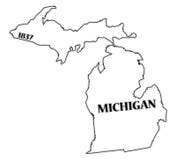
Subsequent courses focus on adding interaction with JavaScript and enhancing the styling with responsive design. This is the second course in the Web Design For Everybody specialization. Using that design they will use CSS to implement the design by adding fonts, colors, and layouts. Upon completion of the course, learners will be able to sketch a design for a given HTML page.
White pages michigan free how to#
To ensure that your sites do not put up barriers for people with cognitive and/or physical disabilities, you will learn how to evaluate pages using the standardized POUR accessibility guidelines. When done incorrectly the result can be worse than no styling at all.

When done correctly, the styling of a webpage can take enhance your page. The emphasis will be on learning how to write CSS rules, how to test code, and how to establish good programming habits. This course will show you the basics of Cascading Style Sheets (CSS3). Now, sites are designed with complex layouts, unique fonts, and customized color schemes. The web today is almost unrecognizable from the early days of white pages with lists of blue links. You can see a sample site for the capstone course at Subsequent courses focus on the marketable skills of styling the page with CSS3, adding interactivity with JavaScript and enhancing the styling with responsive design. This is the first course in the Web Design For Everybody specialization. The focus of this course is on the basics, not appearance. The course will culminate in a small final project that will require the completion of a very simple page with links and images. There are no prerequisites for this course and it is assumed that students have no prior programming skills or IT experience. The textbook we use is available online, “The Missing Link: An Introduction to Web Development and Programming” by Michael Mendez from This course will appeal to a wide variety of people, but specifically those who would like a step-by-step description of the basics.

Throughout the course there will be a strong emphasis on adhering to syntactic standards for validation and semantic standards to promote wide accessibility for users with disabilities. We will explore the theory (what actually happens when you click on a link on a webpage?), the practical (what do I need to know to make my own page?), and the overlooked (I have a page, what do I do now?). This course is designed to help the novice who wants to gain confidence and knowledge. But what if you actually want to understand how the page was created? There are great textbooks and online resources for learning web design, but most of those resources require some background knowledge.
White pages michigan free software#
Thanks to a growing number of software programs, it seems as if anyone can make a webpage.


 0 kommentar(er)
0 kommentar(er)
